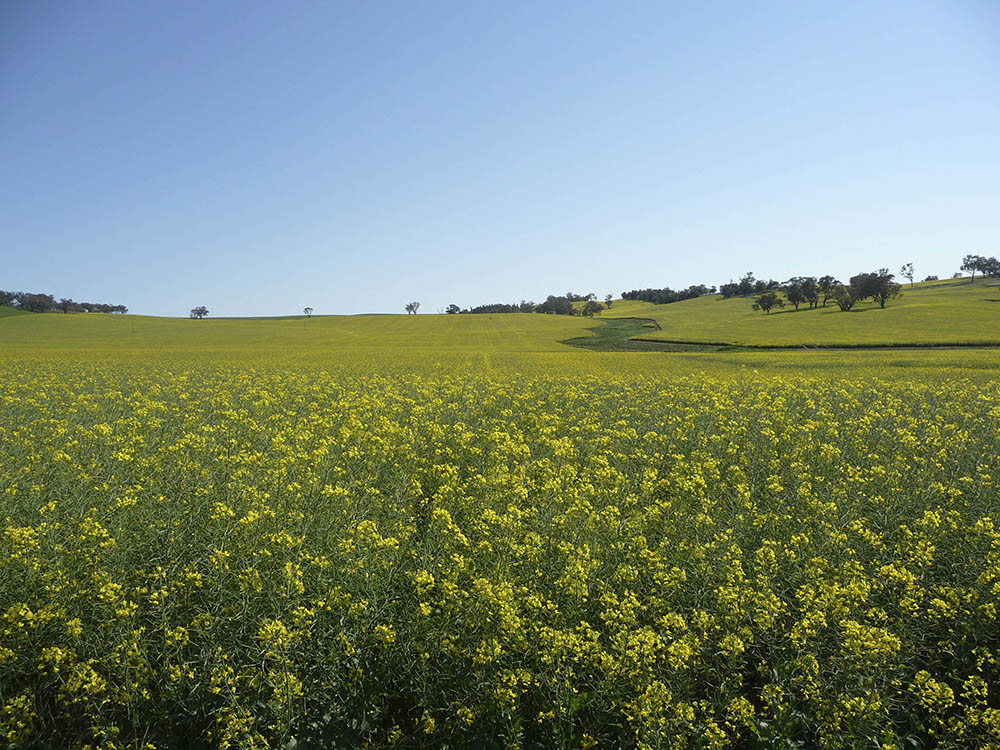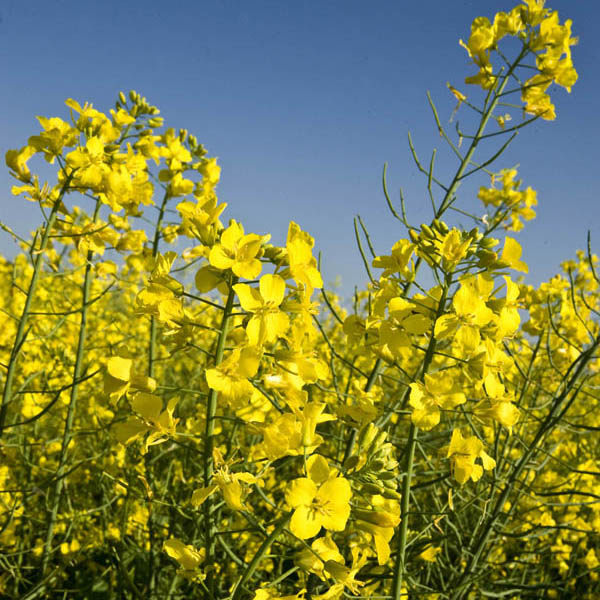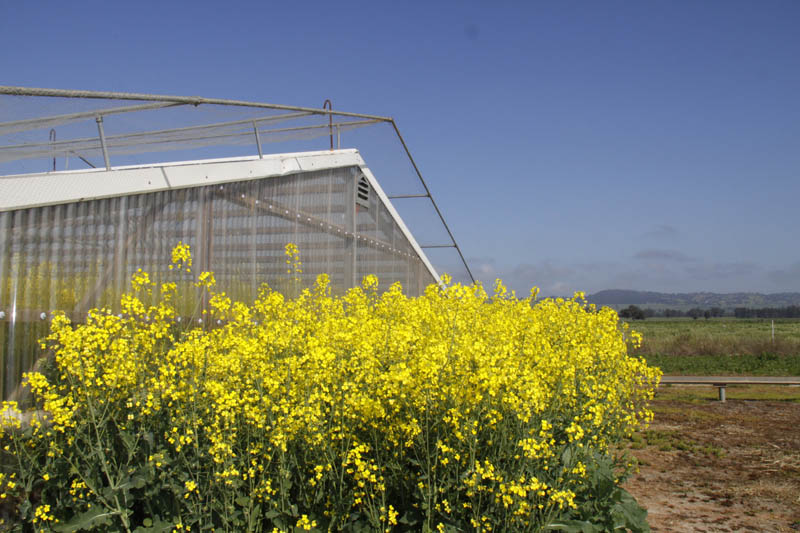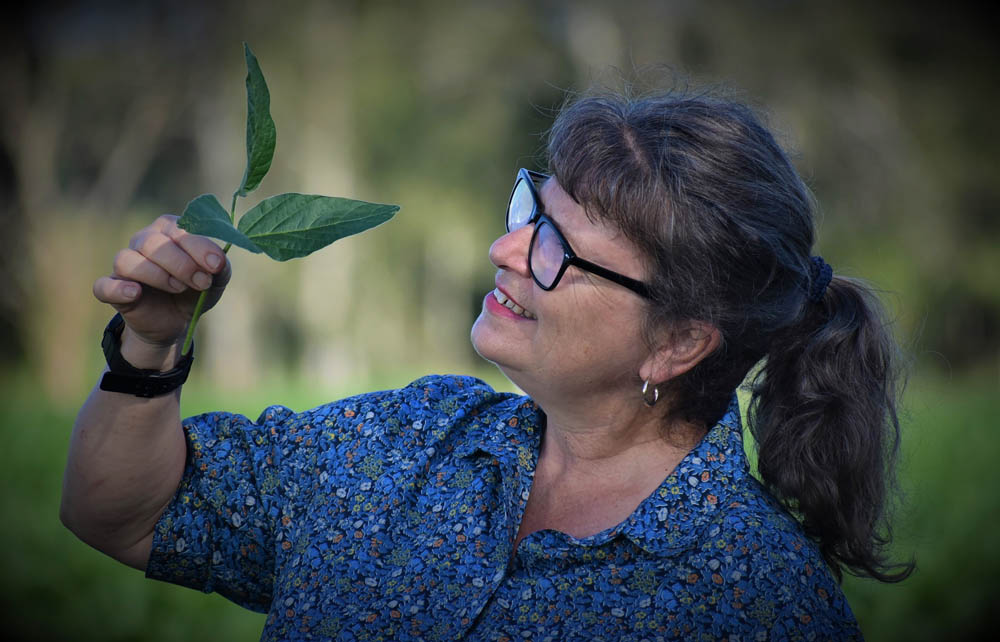- GVP $1.3 billion est. Down 28% year-on-year.
- Domestic oilseed prices softened, down from the unprecedented highs of 2021-22.
- NSW exports reached a new record volume with biofuel policy a key driver of global oilseed demand.


Production
Wet conditions bookended the canola growing season, separated by a relatively dry June and July in most regions. 140 The majority of canola crops generally withstood the wet conditions reasonably well however, some crop damage and losses due to flooding was experienced in lower-lying areas of the Central West and Riverina-Murray regions toward the end of the season. Harvest was also challenging on heavier soils with waterlogged paddocks restricting access the more direct heading of crops that would otherwise have been windrowed. The wet conditions brought with it a larger than normal occurrence of mouldy seed and in response to the volume of weather-impacted canola, the Australian Oilseeds Federation introduced an additional 2022-23 seasonal standard which had a higher tolerance for seed with the appearance of mould. 139
Sunflower seed was the standout growth crop in 2022-23, with production up 135% on the 10-year average to 32 thousand tonnes – the largest crop since 2010-11. 1 While domestic sunflower seed demand has been largely currently confined to use for birdseed, horse feed and specialist human-consumption markets, there has been renewed interest in growing sunflowers since the outbreak of the Ukraine war for domestic oil production. 145 However, crushing capacity for non-canola remains limited despite interest from several smaller NSW-based crushers. Australia is currently reliant on imported sunflower seed oil, importing on average 60,000t per annum. 35
The total area planted to soybeans decreased and production was down 18% year-on-year to 28 thousand tonnes. 1 Cottonseed production was also down 12% year-on-year to 884 thousand tonnes due to decreased cotton lint production off the back of a highly rain disrupted and extended planting period and down from the record 2021-22 cotton crop. 1
Price
Overall, domestic canola cash prices fell by over a third from their peak in May 2022 of near $1,037/t (delivered Port Kembla) to their lowest point of $587/t in March 2023. 122 Global benchmark futures prices also decreased 35% over the same period. 165 Despite the price pressures, continuing strong global biofuel demand and the ongoing uncertainties surrounding the Ukraine’s production and trade capabilities, provided a decent floor for prices. Average canola prices for 2022-23 remained well above the longer-term average at $797 (delivered Port Kembla), 36% above the 5-year average to June 2021. 122

Trade and Macroeconomic Conditions
Biofuel policy continued to be a major driver of global oilseed demand. The EU, the US and Brazil are three of the largest consumers of biofuel however, more than 60 countries have biofuel mixing requirements and policies which are a key driver of biofuel consumption and demand. Whilst typically, the majority of NSW canola is sold to domestic facilities for crushing into oil and meal, strong growth for renewable fuels again offered a great opportunity for NSW canola exports during 2022-23.
The peak average canola price realised over 2021-22 coincided with low world ending stocks. Global stocks had recovered by the close of 2022-23, supported by a 3% year-on-year increase in global oilseed production. The higher production was driven by expected higher soybean production in Brazil and higher canola production in Canada, the EU and Australia, larger sunflower crops in Argentina and larger cottonseed production. These increases offset reduced sunflower seed production in the Ukraine and the EU. Global 2022-23 oilseed production was estimated at nearly 631 MMT. 124
Global Biodiesel Feedstock Crops 168
- Canola Oil
- Soybean Oil
- Palm Oil
- Used cooking oil
- Other
Canola Price and Global Opening Stocks 122 165 166
- Canola (del. Port Kembla)
- CME Futures
- World ending stocks (RHS)
Australian crushing capacity, meal and oil production, and exports
Consequently, Australian exports of canola oil hit record highs over the past few years. Key export destinations by volume included China, Taiwan and New Zealand.
Outlook
Stronger Primary Industries Strategy
National Soybean Breeding Program
Strategic Outcome

- 2.5 Partner for productive, efficient and resilient food and fibre supply

A new variety of soybean developed in NSW will significantly boost productivity and profitability for growers across the state, locking in crop security and helping to meet the projected global demand for diverse protein supplies. Bred as part of the ongoing Australian National Soybean Breeding Program, a collaboration between NSW DPI, CSIRO and Grains Research and Development Corporation, Gwydir is the first variety in NSW that is resistant to soybean leaf rust (Phakopsora pachyrhizi). An airborne fungal disease spread by tiny spores, soybean leaf rust thrives in wet conditions and rapidly progresses towards the canopy of the plant where it destroys the green leaves and prevents the grain from filling the pods, resulting in substantially reduced yield and crop quality.
A 2019 analysis, based on an edible grain price of $700 per tonne with severe soybean leaf rust occurring every four seasons, estimated the resulting income benefit for soybean producers sowing and harvesting a rust resistant variety was around $2,500 per hectare. The higher-yielding and early-maturing variety is well suited to different climates, particularly to an early sowing window on the northern NSW production regions including the North Coast, Northern Tablelands, Northern Slopes and Liverpool Plains.
Gwydir’s improved weather tolerance will help growers to maintain edible market quality and price in environments that experience heavy rainfall at harvest time. Its narrow leaf allows better spray penetration and more light deep into the canopy, where it can stimulate pod-set after flowering. With its high protein content, Gwydir is suitable for high-value edible markets for export and domestic consumption, meeting the growing demand for plant-based foods.


